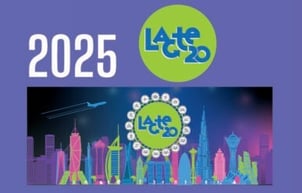If you work in a multinational, you’ll get a taste for the experiences only larger, multilingual companies can offer — like the opportunity to learn about new cultures and ways of doing business. However, unlocking these benefits requires proactively solving communication challenges that typically occur in multicultural, and multilingual environments.
Let’s examine 4 of the most common friction points and how interpreting services can help overcome them.
Distinguishing Between Direct vs Indirect Communication Styles
Not everyone communicates their intentions or desires explicitly. This means that indirect communication is often a part of business negotiations, or even the day-to-day social interactions between colleagues. However, non-native speakers may struggle to understand the flow of conversation if they’re taking everything that’s said at face value.
Learning how to identify, interpret and manage indirect communication styles — by analysing messages for underlying meaning — takes a while to develop, especially if you’re from a culture that values short, direct and frank answers.
The beauty of interpretation is that it accounts for these nuances. By ensuring your team has access to interpretation tools and services, you’ll mitigate the risk of avoidable misunderstandings that can cause tension between staff and clients. For example, our network of partner Language Service Providers work with vetted interpreters who are trained to communicate both the intention and context, as well as the content of each message — so that nothing gets lost in translation.
Understanding Accents And Different Levels Of Fluency
Employees working in their second, or perhaps third, language can struggle to fully step into their roles if they feel misunderstood every time they speak. Similarly, their native English-speaking colleagues may find it difficult to maintain lengthy or detailed conversations if they’re still getting used to hearing a range of accents.
Simultaneous interpretation- enabling tools and services can mitigate the risks. For example, employees who may be subject matter experts will feel confident taking the floor knowing that they’ll be clearly understood in the language they know best. Meanwhile, you’ll also avoid team frustration, possible interpersonal conflict or misunderstandings, and low engagement or morale.
Taking steps to ensure equitable access to a multilingual workspace can start small and simple. For example, you could start by including interpretation-enabling tools in online meetings. We share how to make the best web conferencing platforms multilingual in this blog post.
Mediating Differing Attitudes To Hierarchy And Authority
A multilingual, multicultural workforce may be socialised into different cultural norms. To work in harmony, your team will need to be educated on what good business etiquette means across each culture, particularly around different attitudes to hierarchy and authority. The flipside of this is managing, or expressing, cultural sensitivity in your leadership style.
For example, according to Harvard Business Review, in Japan, more attention is paid to hierarchy and authority than in businesses in the United States. Meanwhile, those in power often ensure their decision-making is strongly informed by team opinions and experiences, making their decision-making more consensual than their US counterparts.
How employees approach their supervisors, or expect to be treated by the teams they’re supervising, is strongly informed by the ways they were taught to give and receive respect. While compromise is essential to a multinational company, being aware of these cultural differences — as expressed in language, for example — will ensure that even outright offensive misunderstandings can quickly be cleared-up.
This risk can be mitigated quite simply: if everyone in the business is familiar with your chosen interpretation platforms, they’ll be able to pick up and rectify any possible miscommunication.
Managing Conflicting Norms For Decision Making
Negotiations between multicultural teams or with international clients can be volatile, unless you’ve proactively prepared for how different cultures approach decision-making. For example, a Middle-Eastern businessman may see hiring relatives as a way to ensure long-term, trustworthy employees. Meanwhile, a Western businessman may frown upon this practice as nepotism. What’s normal in one culture, may be seen as dubious in another.
Interpreters are aware of the cultural nuances attached to the languages they’re working in. Along with explaining cultural differences — such as different hiring preferences — interpreters are skilled at delivering messages in a way that meets their audience’s cultural norms. They’ll also be able to help when delivering workshops in international negotiations and help you add diversity and inclusion to global, multilingual teams.
How Interprefy Can Help
If you’re leading a multilingual team, it’s worth considering investing in a long-term interpretation partner. You’ll enjoy a trusting relationship that systematically works to eliminate much of the above-mentioned friction, in a cost-effective and sustainable way. For example, your teams will be familiar with standardised software, and trust that every meeting or event they attend will be accessible to them — an instant morale boost.
Our real-time interpretation solutions offer a truly culturally responsive, contextual multilingual experience. We:
- Provide a cloud-based remote simultaneous interpreting solution that can be integrated with popular online meeting or conference platforms
- Offer a proprietary events platform with simultaneous interpretation capabilities, including event support and project management
- Source highly professional, experienced multilingual interpreters for all your events
- Train your in-house interpreters or team on how to use the Interprefy platform
Let’s connect and discuss how our interpretation services can help you guarantee effective communication in the multilingual workplace. Click the button below and schedule a 15-min call or ask us a question.





 More download links
More download links



